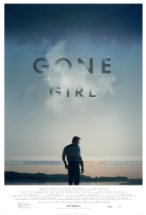Black Sea
Posted on January 29, 2015 at 3:51 pm
B-| Lowest Recommended Age: | High School |
| MPAA Rating: | Rated R for language throughout, some graphic images and violence |
| Profanity: | Constant strong language |
| Alcohol/ Drugs: | Drinking, smoking |
| Violence/ Scariness: | Extended, intense, and graphic peril and violence, many characters injured and killed, some accidentally, some intentionally |
| Diversity Issues: | Diverse cultures |
| Date Released to Theaters: | January 30, 2015 |

Two comments made by characters in this film summarize what it is that makes submarine stories so instantly compelling. “Outside is just dark, cold, and death,” says one. “We all live together or we all die together,” says another.
Submarines are the setting for the ultimate locked room story, the purest form of human interaction, with a small group of people (usually all men), cut off from everyone else. You can’t call the cops, appeal to higher authority, or run away.
This submarine story ramps up the conflict. In most cases, the crew may have some conflicts about how to proceed but everyone is literally on board with the task, whether exploration or military action. But “Black Sea” adds the most divisive element of all: greed. This crew, half British, half Russian, is going in search of lost Nazi gold at the bottom of the Black Sea, with 40 percent going to the rich guy who financed the expedition and the rest to go to everyone on board. None of these people are American, but just to make sure we get the message about the value of a huge pile of gold bars, Captain Robinson (Jude Law, with receding hairline and Scottish brogue) counts it up in dollars.
It’s “The Treasure of the Sierra Madre” with a bit of “Moby Dick” and “The Towering Inferno,” plus some Occupy Wall Street thrown in for good measure.
We first see Robinson getting laid off. It has nothing to do with his performance, he is assured. It’s just that they don’t need sub captains or even subs any more. They have better ways of doing marine salvage. They give him a paltry £8000 and the job he has had all his life, the one he lost his wife and son by being away too much, evaporates. “They want me to flip burgers,” he says. Everything he has devoted his life to seems lost.
Then a friend tells him “I think I knew a way not to be like this.” He knows about missing gold, and puts Robinson in touch with the representative of the wealthy man who will fund the operation, at least to the extent of a rusty old tub of a Russian submarine, in exchange for 40 percent.
Robinson assembles the crew, understanding that it is a volatile mix. “He’s a psychopath, but he’s an incredible diver, half man, half fish,” he says about one member of the crew. When the one who told him about the gold commits suicide, Robinson replaces him with an 18 year old who has never been to sea. They also bring along the man who negotiated the deal on behalf of the wealthy American (Scoot McNairy), who has no experience at sea and suffers from claustrophobia. Also arrogance and a highly questionable sense of integrity.
Director Kevin Macdonald (“The Last King of Scotland”) skillfully navigates the narrow corridors of the decrepit submarine as the tension builds, though equipment problems, crew battles, and the overheated impact of all that money. Suddenly, people who would think themselves wealthy with thousands of pounds are calculating how much more their share of the gold would be with a smaller number to divide it among. The political overlay and flashbacks to Robinson’s (possibly imagined) idyll with his family are heavy-handed and at least one of the plot twists is preposterous, but the fundamentals of the story and that irresistibly cramped and isolated setting keep the tension level high.
Parents should know that this film includes constant very strong language, extended and peril and violence with many characters injured and killed, fighting, knives, guns, some very disturbing images, and mild sexual references.
Family discussion: Why was Robinson so protective of Tobin? Do you think he was a good captain?
If you like this, try: “The Hunt for Red October,” “U-571,” “K-19: The Widowmaker,” and “Crimson Tide,” and, for a change of tone, “Operation Petticoat”




